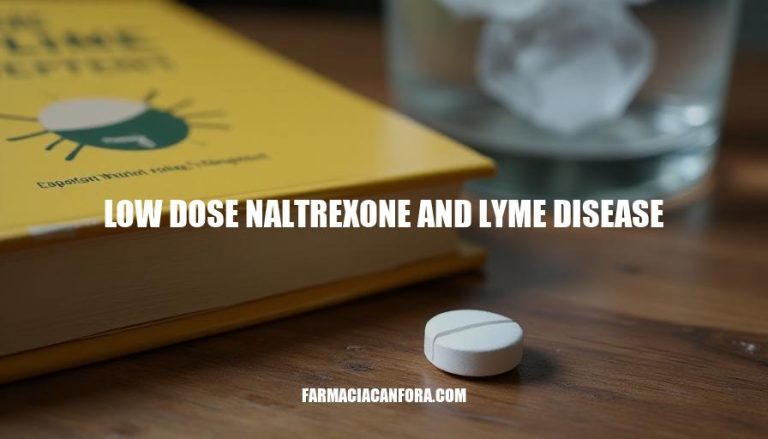


Lyme disease is caused by bacteria that spread through tick bites. It can cause fever, headache, and arthritis in some people. If it’s not treated early, it can lead to serious problems.
Low dose naltrexone (LDN) works by temporarily blocking opioid receptors, which leads to an increase in endogenous opioids like endorphins and enkephalins. This increase in endorphins helps modulate the immune system and reduce inflammation. In the context of Lyme disease, LDN can help alleviate symptoms by reducing chronic inflammation and modulating the immune response.
One example of LDN’s effectiveness in Lyme disease is its ability to decrease cytokine production.
Cytokines are signaling molecules that play a key role in inflammation, and their overproduction can lead to persistent symptoms in Lyme disease patients. By reducing cytokine levels, LDN helps to alleviate symptoms such as pain, fatigue, and brain fog.
Additionally, LDN has been shown to improve the function of regulatory T cells (Tregs), which help balance the immune system. In Lyme disease, an overactive immune response can lead to autoimmune-like symptoms, and LDN helps to restore immune balance by enhancing Treg activity.
Scientific studies have also demonstrated LDN’s potential in reducing neuroinflammation, which is particularly relevant for Lyme disease patients experiencing neuropathic pain.
By calming overactive microglial cells in the central nervous system, LDN can reduce pain and improve overall quality of life.
In summary, low dose naltrexone offers a promising approach to managing Lyme disease by modulating the immune system, reducing inflammation, and alleviating symptoms through its effects on endogenous opioids and regulatory T cells.
LDN has shown promise in managing Lyme disease symptoms by modulating the immune system and reducing inflammation.
While these findings are promising, it is essential to note that ongoing research is necessary to fully understand LDN’s effects on Lyme disease. As with any treatment option, patients should consult with healthcare professionals for personalized advice on incorporating LDN into their treatment plan.
Further studies will help determine the full potential of LDN in managing Lyme disease and its long-term benefits for patients.